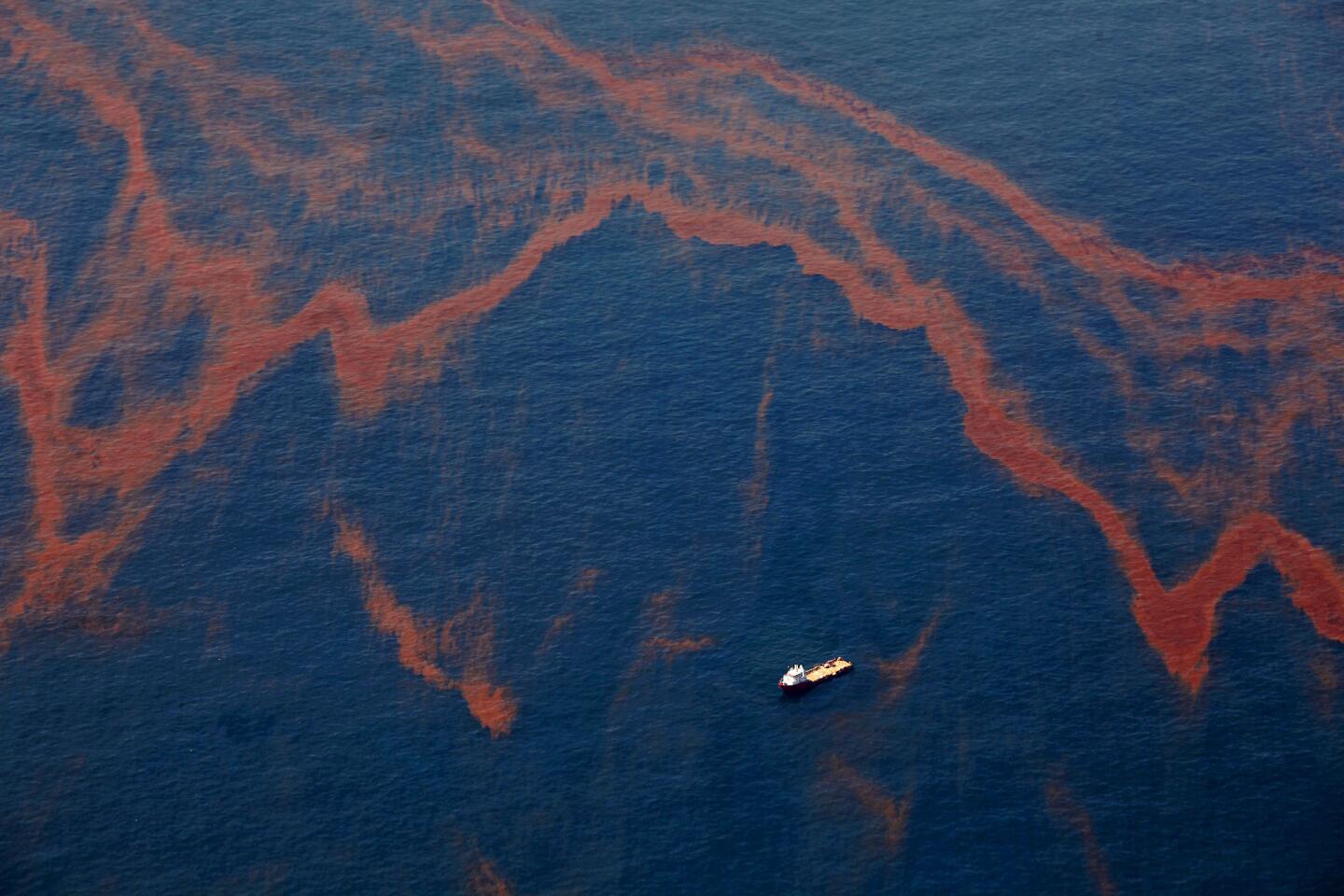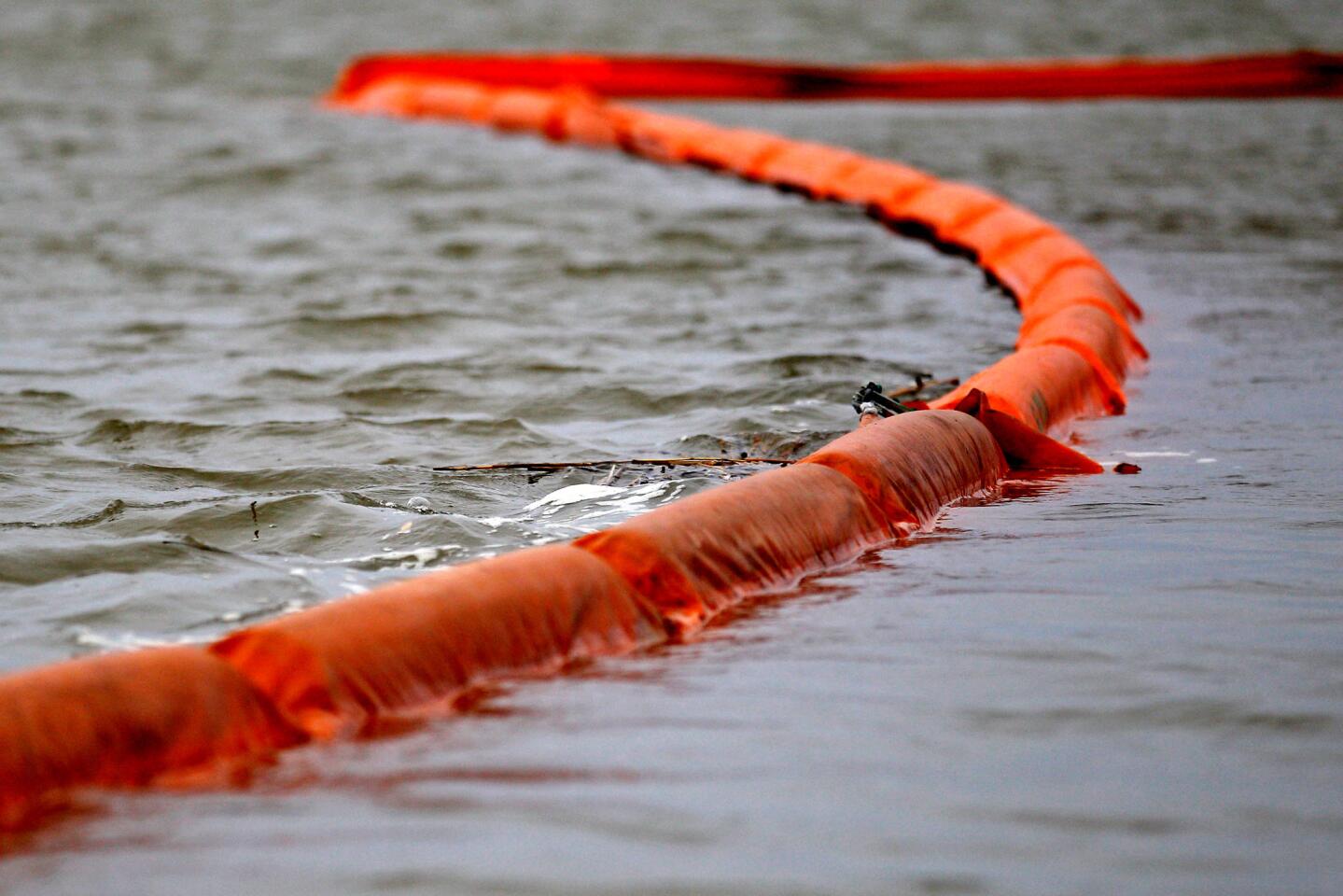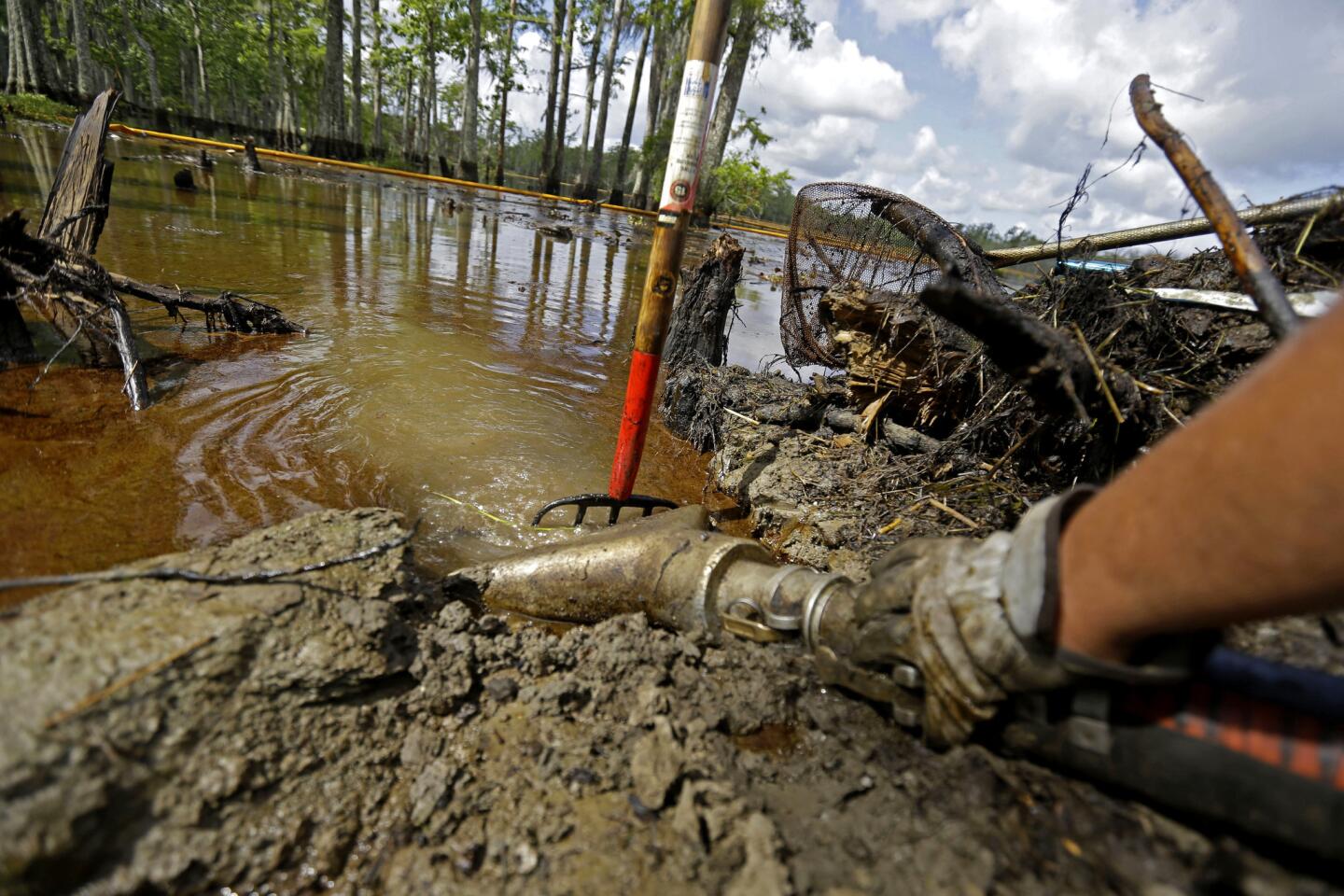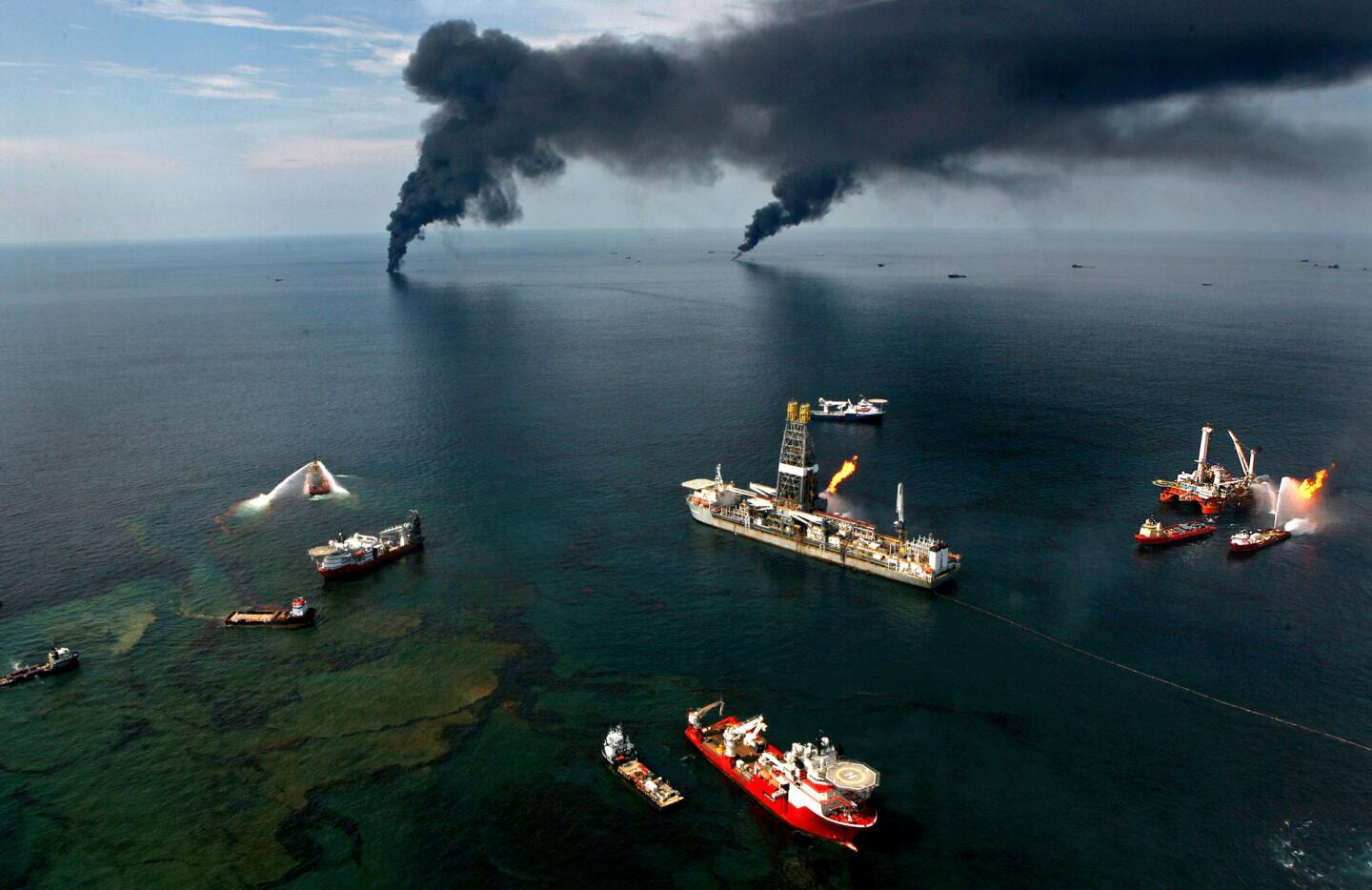Wilma Subra, a diminutive grandmother, has long challenged the corporate polluters in one of the nation’s most toxic regions.

The BP oil spill in the Gulf of Mexico continues to spread in this 2010 photo. Subra warned of the potential danger from dispersants used to break up the slick and pushed for authorities not to burn off the oil when winds were blowing toward land. (Carolyn Cole / Los Angeles Times)

Oil booms line wetlands of the Mississippi River in Venice, La., in this 2010 photo. After determining that dispersants contained neurotoxins, Subra demanded protective gear for cleanup workers. Federal authorities and BP officials had argued the dispersants were safe and warned workers they would be fired if they wore the gear. Subra prevailed. (Chris Graythen / Getty Images)

Contractors use a vacuum truck to clean up crude oil that rose to the surface of an approximately 22-acre sinkhole in Bayou Corne, La., in June. A former BP contractor now working with the firm that created the sinkhole says Subra “is the voice of reason. She understands the rules and regulations because she’s helped formulate some of them.” (Gerald Herbert / Associated Press)








